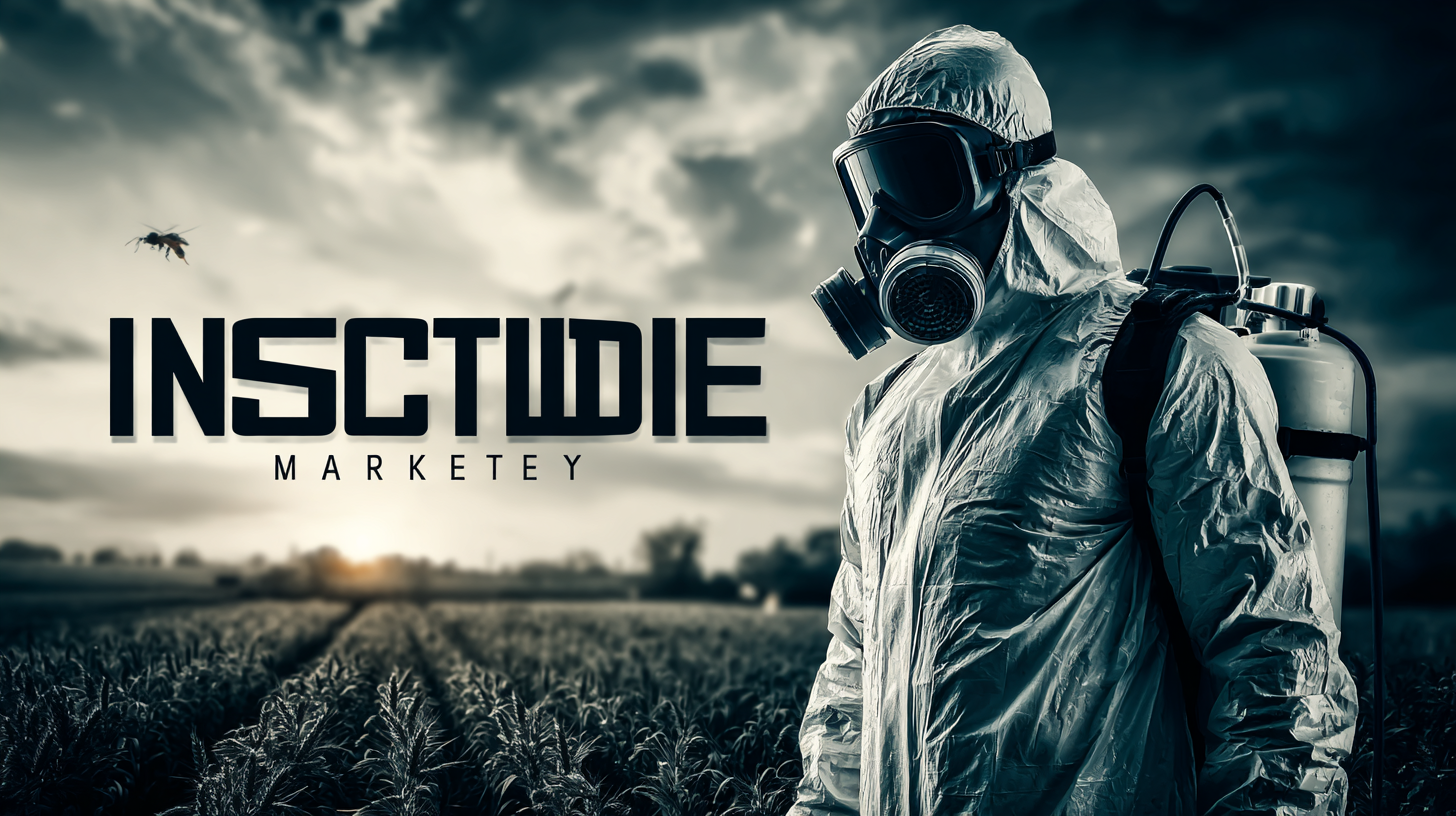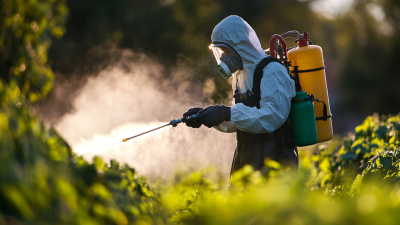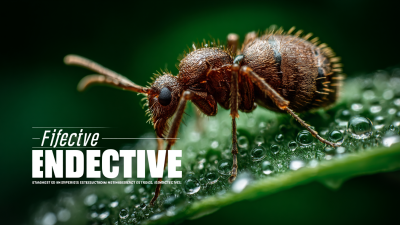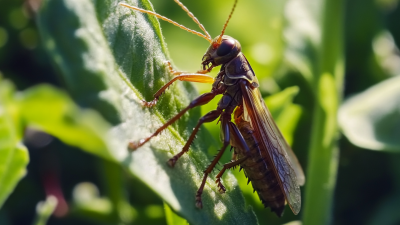 0551-68500918
0551-68500918 





You know, in the past few years, the insecticide market has really taken off! It's mainly due to the growing need for effective pest control solutions, especially in agriculture and public health. A recent report from Market Research Future suggests that this global market could hit around USD 18.0 billion by 2025, with a nice annual growth rate of about 5.1% in the coming years. One big player in this field is Innovation Meiland (Hefei) Co., LTD. They're all about pushing the envelope when it comes to developing new pesticide products, tweaked formulations, and improved processes to cater to the different needs of businesses everywhere. Based out of Hefei, China, Meiland Stock really shows what it means to have that commitment to quality and performance that so many in the industry aspire to. By using the latest research and top-notch technology, Meiland Stock is focused on delivering top-tier Insecticide Solutions that really help boost agricultural productivity and sharpen pest management strategies for their clients.

You know, the world of insecticides is really changing these days. It's all about coming up with new ideas and solutions that are effective and kind to our planet—we’re definitely seeing that demand grow! In fact, the Global Insecticide market has been booming lately, with estimates suggesting it could hit about $18 billion by 2025. Pretty wild, right? This growth is because folks are looking for smarter formulations that tackle things like pest resistance and tough regulations, all while being easier on the environment.
Take a look at the stats! Biopesticides, for instance, made up over 10% of the market back in 2020, and it looks like that number is just going to keep climbing. Plus, new tech like nanotechnology and precision agriculture are really upping the game—making these insecticides not just more effective but also safer. You can see that manufacturers are putting a lot of effort into research and development these days. They’re gearing up to tackle the ever-changing challenges of pest management and meet what consumers want: greener choices.
So, honestly, the future of insecticide manufacturing seems pretty exciting! With these innovations, we’re looking at smart, sustainable solutions that can cater to a lot of different needs. It’s a great time to be following this industry!
You know, China has really become a major player in the global insecticide market lately. They’re using some pretty advanced manufacturing techniques, plus they’ve got supportive government policies and a strong supply chain backing them up. Their dedication to agricultural innovation has spurred the creation of super effective insecticide solutions that meet the needs of businesses in various sectors. This gives Chinese manufacturers a bit of an edge, letting them not only keep up with local demands but also export their products all over the world.
And let’s not forget how crucial insecticides are in agriculture these days. With the rising demand for food production worldwide, managing pests is more important than ever. So, Chinese companies are stepping up their game, going beyond just the traditional chemicals by investing in biopesticides and eco-friendly formulations. This strategy aligns them with the global push for sustainability. It’s like they’re doubling down on this multi-pronged approach to solidify their presence in the market, making China a real key player in delivering innovative insecticide solutions to businesses around the globe.
| Country | Market Share (%) | Production Volume (Metric Tons) | Export Value (USD Million) | R&D Investment (USD Million) |
|---|---|---|---|---|
| China | 30 | 500,000 | 1,200 | 300 |
| India | 15 | 300,000 | 500 | 150 |
| USA | 12 | 200,000 | 700 | 250 |
| Brazil | 10 | 150,000 | 300 | 100 |
| Germany | 8 | 180,000 | 400 | 200 |
You know, sustainable insecticide production is becoming really important these days, especially as the agriculture industry starts to realize just how traditional chemical pesticides can mess with our environment and health. With all the chatter lately about the ecological footprint of farming practices, it's clear that manufacturers need to get creative and come up with new ways to make insecticides that actually support sustainability goals. This means tapping into things like microbial bio-control agents and other eco-friendly alternatives that do less harm to our health while also encouraging biodiversity.

More and more, there's a push for green production and consumption, which is super important in the textile and apparel industries. But guess what? We can apply that same mindset to insecticide manufacturing! If producers start prioritizing biodegradable compounds and think about the entire life-cycle when developing pest management solutions, they can really cut down on the environmental impact we usually see from conventional pesticides.
Looking forward, embracing new approaches like dsRNA biocontrols and integrated pest management strategies could open up some exciting paths for achieving sustainable agriculture while still keeping pest control effective.
Navigating the regulatory maze in insecticide manufacturing is super important for any business looking to provide solid pest control solutions. You know, the compliance requirements can really vary from one place to another, and they're heavily influenced by local environmental policies, health regulations, and agricultural standards. Grasping these regulations isn’t just about staying on the right side of the law; it really helps build a company’s image as a responsible manufacturer. Staying up-to-date with the latest changes is key to avoiding penalties and making sure your products are safe and effective.
Plus, it’s a great idea to get in touch with regulatory agencies early on in your product development journey. This can really speed up the approval process and help you get your products to market faster. Collaborating with local experts who know the ins and outs of the regulatory landscape can give you some pretty valuable insights. Keeping yourself educated on best practices and compliance updates cultivates a culture of responsibility, allowing manufacturers to come up with innovative insecticide solutions that not only kick pests to the curb but also align with environmental sustainability goals.
Taking this proactive route helps companies stay competitive in a marketplace that’s increasingly focused on transparency and safety in agricultural practices.
You know, technology really is shaking things up in the insecticide world! It's making pest control way more efficient and effective. With the global insecticides market expected to hit a staggering USD 12.4 billion by 2030, it’s pretty clear that smart tech is a game changer here. I mean, innovations like artificial intelligence (AI) are pushing regenerative agriculture forward, optimizing how we tackle pests, and making sure the food we produce is safer. Thanks to tools like data analytics and machine learning, farmers can spot pest threats with better accuracy, which means they can apply insecticides more strategically. That’s a big win for reducing waste and lessening the environmental impact.

And here's something interesting—there's a serious buzz around biopesticides and new formulations in this space. As more consumers are leaning towards sustainable practices, the push for organic and biobased solutions is becoming super important. The biopesticides market is actually projected to double in the next few years! It's like there’s this clear move towards eco-friendly pest control methods happening. These advancements not only improve how efficient insecticide applications are but also contribute to healthier ecosystems and safer food—definitely aligning with what modern agriculture is all about!
: The growth is driven by the increasing demand for effective and sustainable solutions in pest control, with a projected valuation expected to reach $18 billion by 2025.
Biopesticides accounted for over 10% of the market share in 2020 and are expected to continue climbing.
Manufacturers are investing in research and development to create advanced formulations that address pest resistance and regulatory pressures while minimizing environmental impact.
Technological advancements, including artificial intelligence and machine learning, are enhancing efficiency, optimizing pest management techniques, and ensuring safer food production.
Sustainable strategies include leveraging microbial bio-control agents, focusing on biodegradable compounds, and adopting a life-cycle perspective in pest management solutions.
The biopesticides market is projected to double in the coming years, reflecting a shift towards environmentally friendly pest control methods.
The goals include minimizing harm to human health, promoting biodiversity, and reducing the ecological costs associated with conventional pesticides.
Advanced methodologies like dsRNA biocontrols and integrated pest management strategies present pathways for achieving sustainability while ensuring effective pest control.
Smart technologies enhance the precision of pest threat identification, leading to targeted insecticide applications that minimize waste and environmental impact.
The global insecticides market is expected to reach USD 12.4 billion by 2030.







